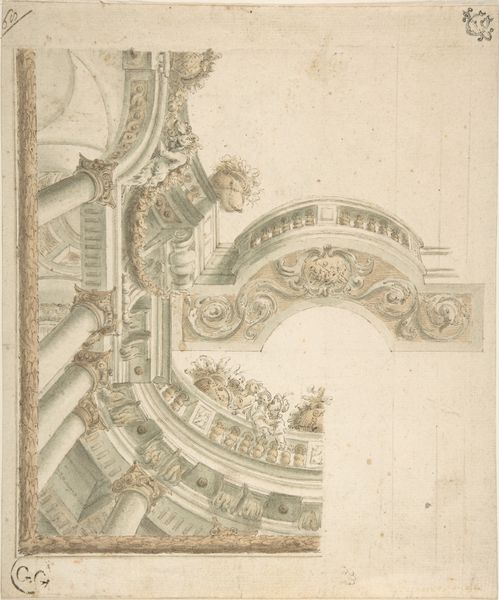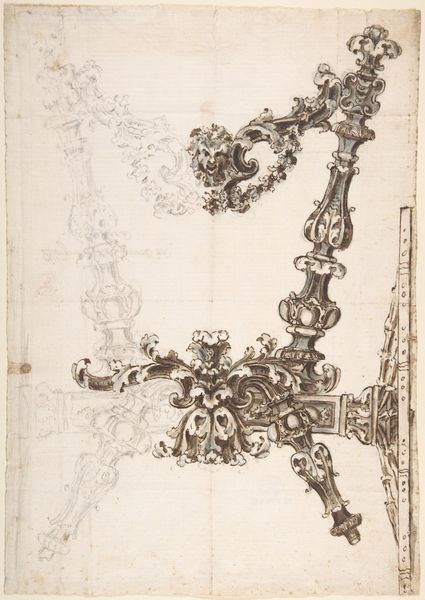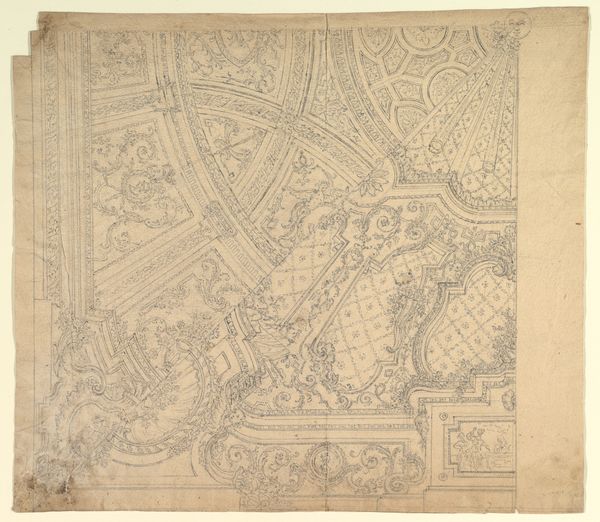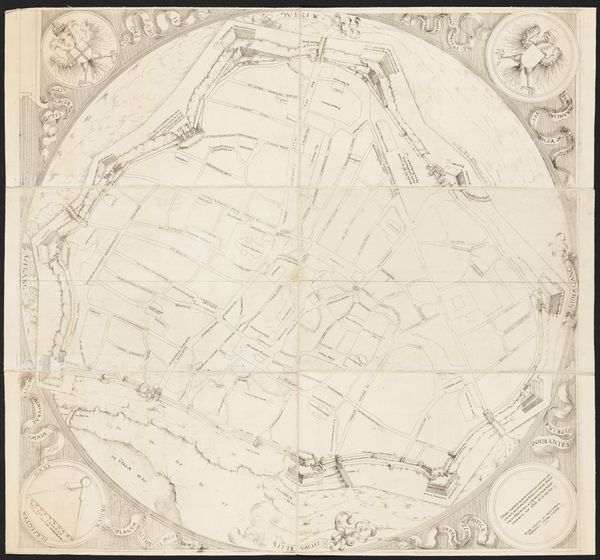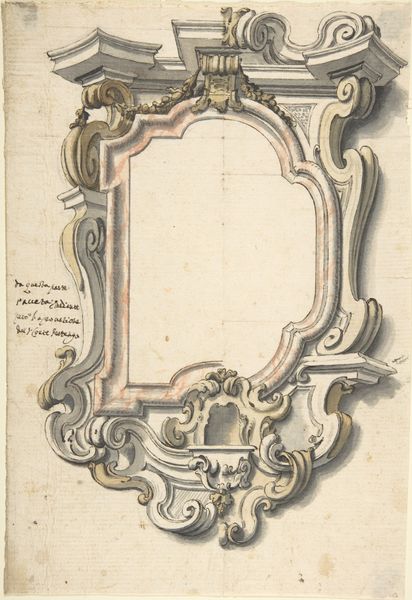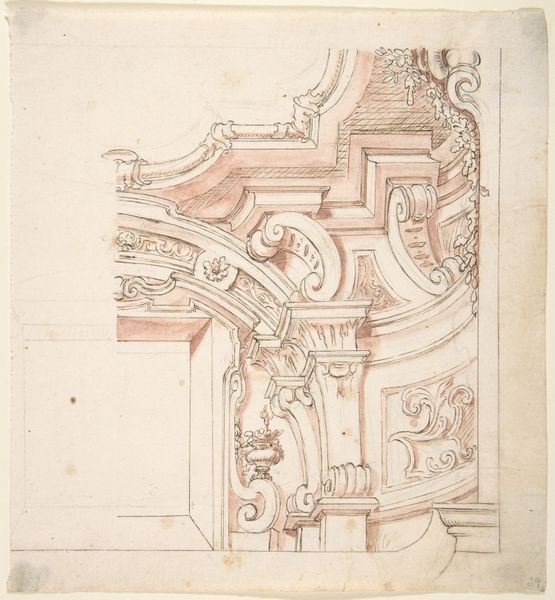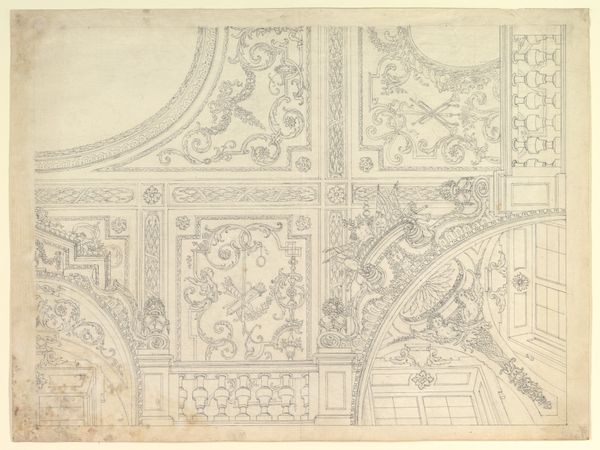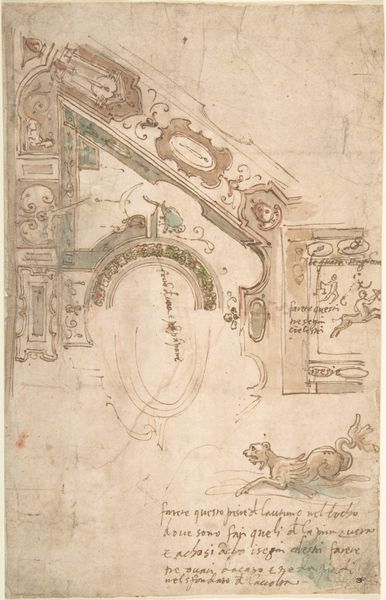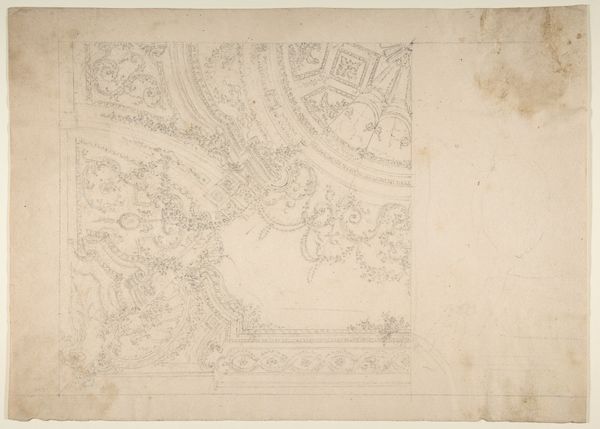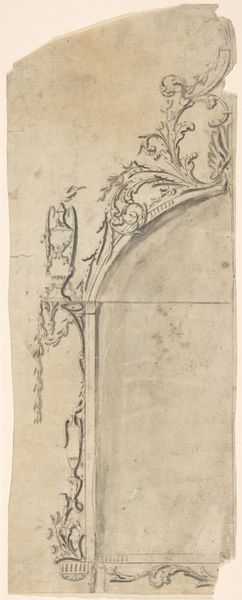
Design for a corner of a Painted Ceiling, Architectural "Cove" with a Seated Figure at the Bottom, and a Putto at the Side 1700 - 1780
0:00
0:00
drawing, print, ink, architecture
#
drawing
#
baroque
# print
#
ink
#
history-painting
#
architecture
Dimensions: 16 3/8 x 11 15/16 in. (41.6 x 30.4 cm)
Copyright: Public Domain
Curator: Here we have an intriguing design study, likely dating from the 18th century. It's attributed to an anonymous hand and titled "Design for a corner of a Painted Ceiling, Architectural 'Cove' with a Seated Figure at the Bottom, and a Putto at the Side". The medium appears to be primarily ink on paper. Editor: Immediately striking is its incomplete state. There’s an inherent dynamism in observing the genesis of an idea. The swirls and classical figures set a light mood for a design meant to literally be overhead. Curator: Indeed, the medium informs our perception; it reveals the process of architectural planning in the Baroque style. The use of line, both delicate and forceful, emphasizes the play of light and shadow vital to this aesthetic. I'd even go further in saying this speaks of how the social elite, their identity enmeshed in this period’s grand projects, used visual imagery to underscore their power. Editor: I see how you arrive at this idea. But also I find that it also directs the gaze upwards; what do you see in the arrangement of figure and space, Formalist-ly speaking? Curator: Note how the seated figure and putto function as focal points in relation to the geometric organization of the cove; they add a figural elegance to this illusion of depth and elevation. This enhances the perspective and lends to the artwork’s capacity to distort and rearrange space around the viewer. Editor: You've drawn my eye into looking at it through the architecture itself; but I consider, also, that while we look at Baroque design and speak of royal authority, consider who could access designs like this – not exactly public, accessible imagery in the modern sense, but indicative of its role as part of an upper class artistic dialogue nonetheless. Curator: The social underpinnings were definitely critical. But the effectiveness of those messages hinged on viewers perceiving it as this grand display, orchestrated through carefully manipulated lines and shapes... Editor: Right. Thank you for elaborating how the arrangement of those very lines contributes meaning to what otherwise becomes an aesthetic question! Curator: A pleasure.
Comments
No comments
Be the first to comment and join the conversation on the ultimate creative platform.

